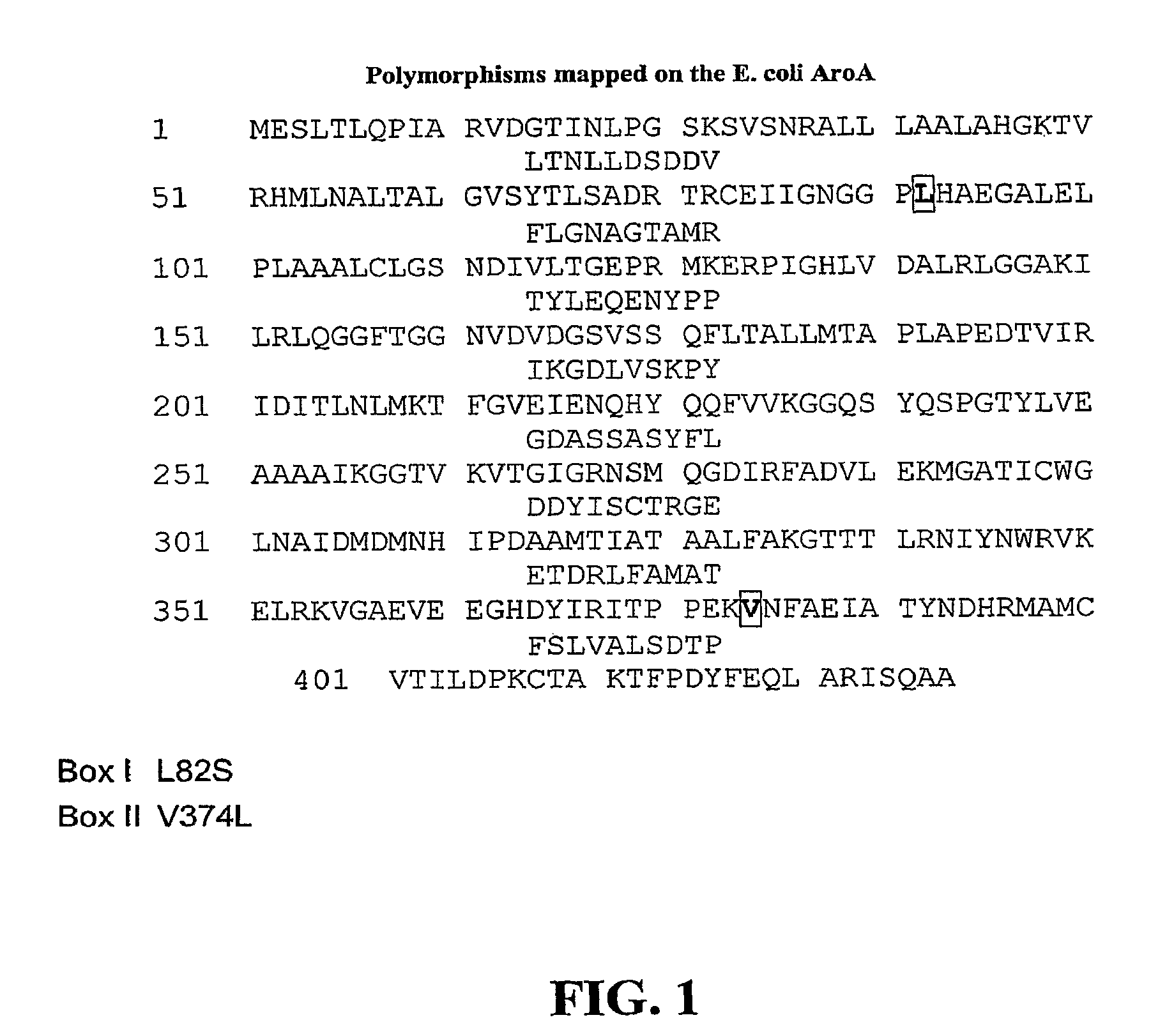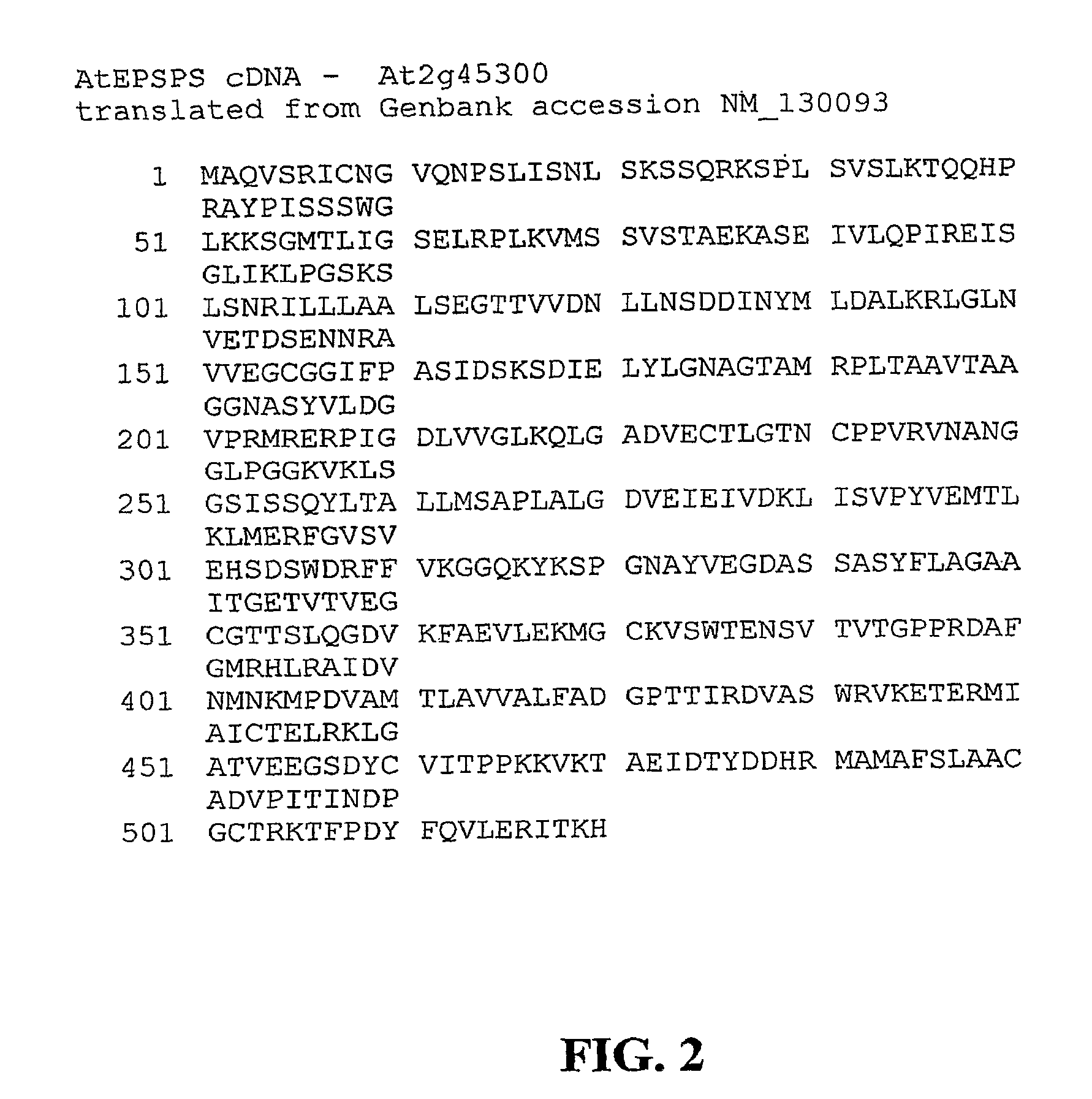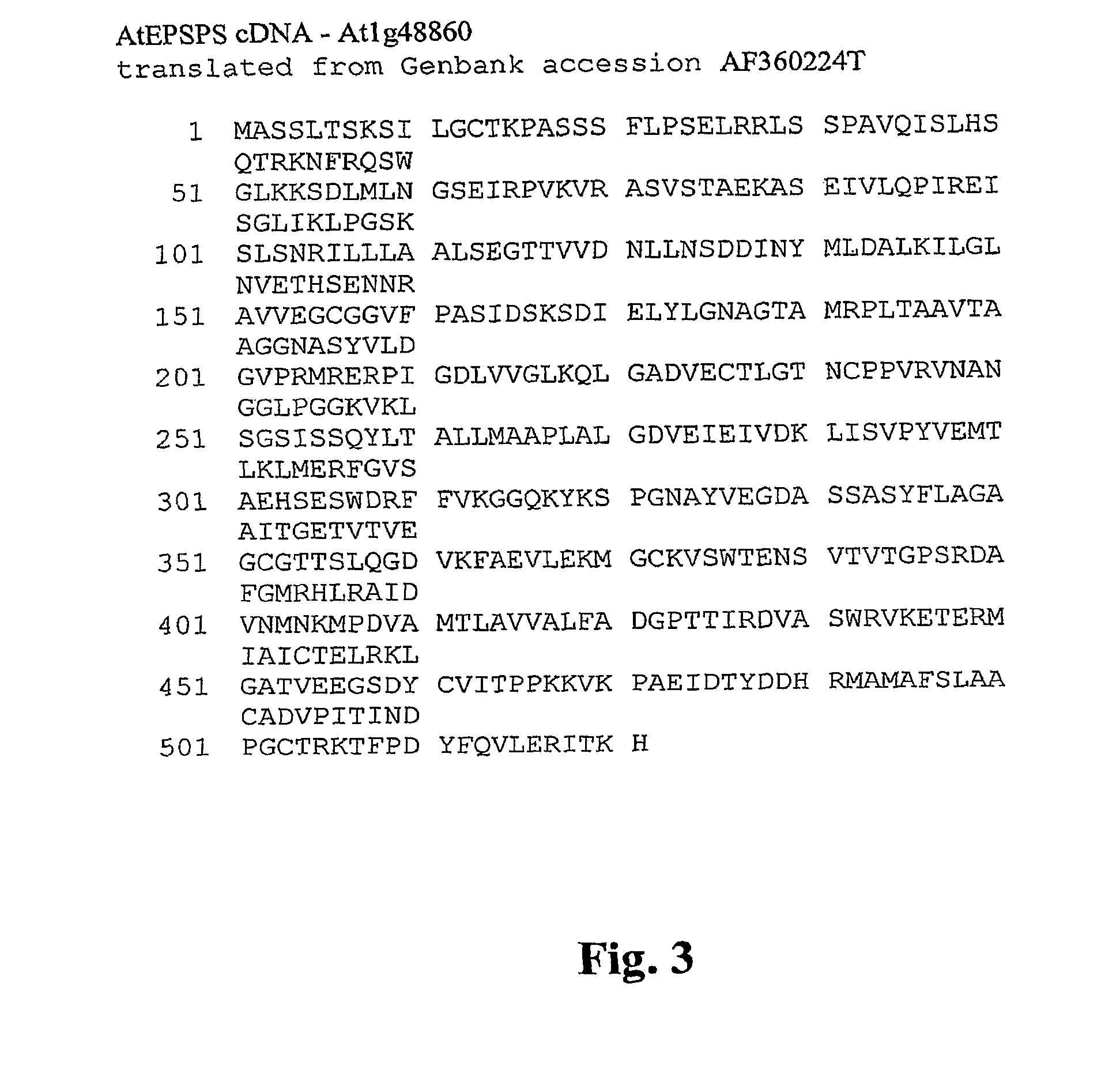EPSPS mutants
a technology of epsps and mutants, which is applied in the field of epsps mutants, can solve the problems of abnormally low growth and development of plants, many complications and problems, and the mutated epsps gene produces a significantly lower enzymatic activity than the wild-type epsps, so as to achieve normal growth or development of plants, increase resistance or tolerance, and the effect of the same catalytic activity
- Summary
- Abstract
- Description
- Claims
- Application Information
AI Technical Summary
Benefits of technology
Problems solved by technology
Method used
Image
Examples
example 1
P178A Mutants in Brassica napus (Canola)
[0129]The following genoplast (recombinagenic oligonucleobase) was made to make a P178A change in Brassica napus (canola) germplasm:
[0130]
SEQ ID 1:VATGCAGGAACAGCCATGCGTTCACTTACGGCTGCAGTTACTH
wherein V is a fluorescent dye (V=Cy3) and H is a reverse nucleotide or reverse base (H=3′DMTdCCPG). The underlined nucelobases represent the heterologous region (codon) where the mutation occurs in the canola genome, ie, A. The genoplast is made according to well known techniques and the genoplast is preferably delivered into a canola plant cell via microparticle bombardment, ie, biolistics. Canola plants regenerated that contain the P178A mutant are resistant to glyphosate when applied at commercial rates.
example 2
P173A Mutants in Oryza sativa (Rice)
[0131]The following genoplast (recombinagenic oligonucleobase) was made to make a P173A change in Oryza sativa (rice) gernplasm:
[0132]
SEQ ID 2:VGGAACGCTGGAACTGCAATGCGAGCATTGACAGCAGCCGTGACTGCH
wherein V is a fluorescent dye (V=Cy3) and His a reverse nucleotide or reverse base (H=3'DMTdCCPG). The underlined nucleobases represent the heterologous region (codon) where the mutation occurs in the rice genome, ie, A. The genoplast is made according to well known techniques and the genoplast is preferably delivered into a rice plant cell via microparticle bombardment, ie, biolistics. Rice plants regenerated that contain the P 173A mutant are resistant to glyphosate when applied at commercial rates.
example 3
E Coli and Arabidposis Mutants
[0133]The following table lists the EPSPS mutations in E. coli (Area) and Arabidopsis NM 130093 that produce a glyphosate resistant phenotype. The specific codon change is indicated in the right column.
[0134]
E. COLINM 130093MUTATION1.T97 → A97T178AACA → GCA2.L82 →S82F159STTC → TCC3.P101 → C101P182CCCA → TGC4.T97; P101 → I97; A101T178I; P182A(T -> I) ACA → ATA;(P -> A) CCA -> GCA5.*N194 → A194N193AAAC → GCC6.T97; P101 → A97; A101T178A; P182A(T -> A) ACA → GCA;(P -> A) CCA -> GCA7.T97; P101 → A97; T101T178A; P182T(T -> A) ACA → GCA;(P -> T) CCA → ACA8.L82; P101 → S82; A101F159S; P182A(F -> S) TTC → TCC;(P -> A) CCA -> GCA9.L82; P101 → S82; T101F159S; P182T(F -> S) TTC → TCC;(P -> T) CCA -> ACA*No true homologous amino acid in E. coli. The closest homologous amino acid in E. coli is N111. Also note that the native E coli has an L in the 82 position and the analogous amino acid in Arabodposis at position 159 is F
[0135]The following listing (a-g) shows in mo...
PUM
| Property | Measurement | Unit |
|---|---|---|
| concentration | aaaaa | aaaaa |
| concentration | aaaaa | aaaaa |
| catalytic activity | aaaaa | aaaaa |
Abstract
Description
Claims
Application Information
 Login to View More
Login to View More - R&D
- Intellectual Property
- Life Sciences
- Materials
- Tech Scout
- Unparalleled Data Quality
- Higher Quality Content
- 60% Fewer Hallucinations
Browse by: Latest US Patents, China's latest patents, Technical Efficacy Thesaurus, Application Domain, Technology Topic, Popular Technical Reports.
© 2025 PatSnap. All rights reserved.Legal|Privacy policy|Modern Slavery Act Transparency Statement|Sitemap|About US| Contact US: help@patsnap.com



